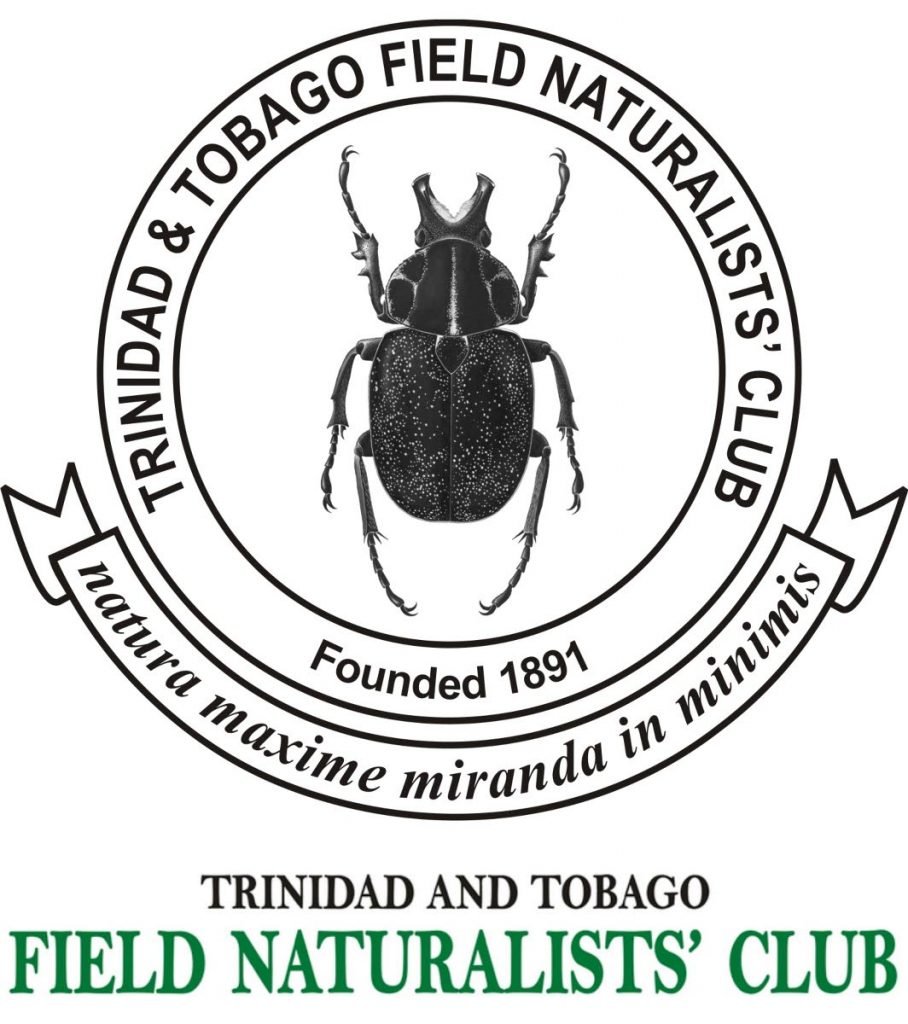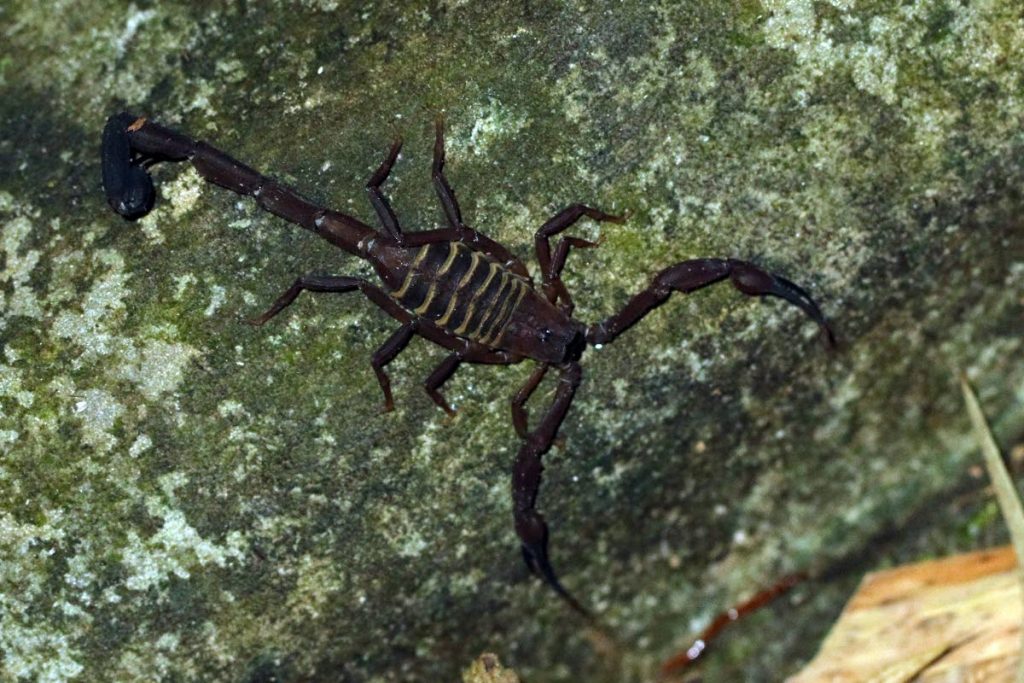Scorpions!

Jo-Anne Nina Sewlal
Often when people hear that I am an arachnologist, you can almost see the gears turning in their heads linking the words “arachnologist” with “arachnophobia”.
Spiders are often the first arachnid that comes to mind but there are quite a few other groups such as scorpions.
There are approximately 2,000 species of scorpions in the world. These creatures range in size from 7 mm to 20 cm in length. Scorpions are similar to spiders in that they have eight eyes but not very good vision and depend on smell to find food and detect the presence of predators. They have special organs called pectines or “comb organs” so-called because they resemble combs that you comb your hair with. These along with special sensory hairs on the underside of the abdomen help scorpions get information about their environment such as, is a predator, food or a mate nearby.

As is typical of arachnids, they have two body segments and eight legs. The two tiny legs near the mouths of spiders are called pedipalps, are enlarged in scorpions and are also called pincers and also do the same function in helping them feed. The end segments of the abdomen are elongated to form a tail (which is not a true tail) with a stinger at the end. The scorpion’s anus is actually located behind the last segment of its “tail”. Like spiders, scorpions exhibit dimorphism which means that males and females look different from one another. The males are usually larger than females with longer tails and more slender pincers.
It is most likely their sting that has made scorpions one of the most feared animals on the planet. However, only 30 to 40 species produce poison potent enough to kill a human. TT is home to 10 species. Most of these deadly species belong to the family Buthidae which is also found here. Members of this family can be easily identified by their thick tails and their slender, tweezer-like pincers. However, the small, black endemic species Tityus trinitatus is the deadliest and the most common species one would encounter on the islands.
What also frightens people about these creatures is the difficulty in treating a victim of their stings, in that what works for one patient does not work for another. This is because of the venom which you can think of as being “tailor made” to the predators they encounter. This is why it is not feasible to manufacture anti-venom for scorpion stings as it varies so much. Also, as with victims of snakebites, after the attack the animal is often chased away or damaged beyond recognition, so that if there was an anti-venom available it would be difficult to determine which one to administer. Again, similar to spiders, there are variations in the appearance of individuals of a species, particularly colour, thus adding to the difficulty in identifying the species that delivered the sting.
Despite their fearsome reputation, scorpions are easier to see in the dark. This is because they fluoresce (shine) under ultraviolet light which is emitted by the moon. This fluorescence is due to a substance found in the very thin hyaline layer which is part of the animals’ tough outer covering or exoskeleton. When it comes to why scorpions have evolved this ability, scientists are still unsure. These arachnids can be labelled as “survivors” as they can survive in very harsh environment, surviving temperatures ranging from 20°C to 50°C. One of the reasons they can survive is because of their varied diet. Like spiders, scorpions mainly feed on insects but their diet is varied and they also eat small reptiles and rodents. Also, at times when food is scarce, they can lower their metabolism to the point where a single insect is able to sustain them for an entire year. This low metabolism rate does not affect their hunting ability and they can quickly pounce on a passing prey. All of these factors lead to them having long lifespans where in the wild they can live from two to ten years, and 25 years in captivity. Despite their toughness, their Achilles’ heel is that they are burrowing animals so they typically need loose soil to be able to occupy an area.
Scorpions are not to be feared. Rather we should respect them for the truly fascinating creatures that they are. The fossil record shows that scorpions roamed the earth 430 million years ago. Certainly we can coexist with them today!
For more information on our natural environment, contact the TT Field Naturalists’ Club at admin@ttfnc.org or visit our website at www.ttfnc.org and our Facebook or YouTube pages.


Comments
"Scorpions!"